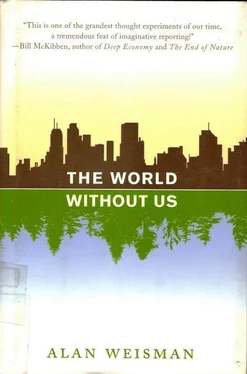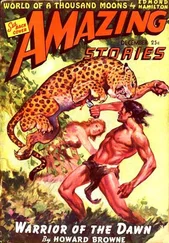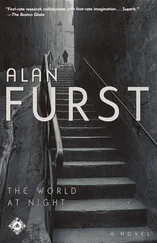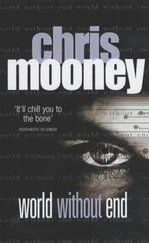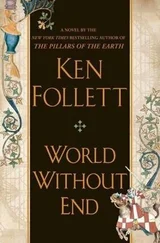The world took off in a different direction—one characterized by active predators—that went from near nothingness to the lush kingdom of dinosaurs. While that was happening, the supercontinent split into pieces that gradually dispersed around the globe. When, after 150 million more years, that other asteroid hit what is now Mexico’s Yucatan Peninsula, and dinosaurs proved too big to hide or adapt, it was time to start over yet again. This time, another agile minor character, a vertebrate called Mammalia , saw a chance to make its move.
Might the current explosion of extinctions—invariably pointing to a sole cause, and not an asteroid this time—suggest that a certain dominant mammal’s turn may be coming to an end? Is geologic history striking again? Doug Erwin, the extinction expert, works on such a vast timescale that the few million years of our Homo species’ life span is almost too short for him to contemplate. Again, he shrugs.
“Humans are going extinct eventually. Everything has, so far. It’s like death: there’s no reason to think we’re any different. But life will continue. It may be microbial life at first. Or centipedes running around. Then life will get better and go on, whether we’re here or not. I figure it’s interesting to be here now,” he says. “I’m not going to get all upset about it.”
If humans do stick around, University of Washington paleontologist Peter Ward predicts that agricultural land will become the biggest habitat on Earth. The future world, he believes, will be dominated by whatever evolves from the handful of plants and animals we’ve domesticated for food, work, raw materials, and companionship.
But if humans were to go tomorrow, enough wild predators currently remain to out-compete or gobble most of our domestic animals, though a few feral exceptions have proved impressively resilient. The escaped wild horses and burros of the American Great Basin and Sonoran Desert essentially have replaced equine species lost at the end of the Pleistocene. Dingoes, which polished off Australia’s last marsupial carnivores, have been that country’s top predator for so long that many down under don’t realize that these canines were originally companions to Southeast Asian traders.
With no large predators around other than descendants of pet dogs, cows and pigs will probably own Hawaii. Elsewhere, dogs may even help livestock survive: sheep ranchers in Tierra del Fuego often swear that the shepherding instinct is so deeply bred in their kelpie dogs that their own absence would be immaterial.
If, however, we humans do remain at the top of the planetary pecking order, in such numbers that ever more wilderness is sacrificed to food production, Peter Ward’s scenario is conceivable, although total human dominion over nature won’t ever happen. Small, fast-reproducing animals like rodents and snakes adapt to anything short of glaciers, and both will be continually selected for fitness by feral cats, highly fertile themselves. In his book Future Evolution , Ward imagines rats that evolve into kangaroo-sized hoppers with saber tusks, and snakes that learn to soar.
Frightening or entertaining, at least for now that vision is fanciful. The lesson of every extinction, says the Smithsonian’s Doug Erwin, is that we can’t predict what the world will be 5 million years later by looking at the survivors.
“There will be plenty of surprises. Let’s face it: who would’ve predicted the existence of turtles? Who would ever have imagined that an organism would essentially turn itself inside out, pulling its shoulder girdle inside its ribs to form a carapace? If turtles didn’t exist, no vertebrate biologist would’ve suggested that anything would do that: he’d have been laughed out of town. The only real prediction you can make is that life will go on. And that it will be interesting.”
PART IV

CHAPTER 17

Where Do We Go from Here?
“IF HUMANS WERE gone,” says ornithologist Steve Hilty, “at least a third of all birds on Earth might not even notice.”
He’s referring to the ones that don’t stray from isolated Amazon jungle basins, or far-flung Australian thorn forests, or Indonesian cloud slopes. Whether other animals who probably would notice—stressed, hunted, and endangered bighorn sheep or black rhinos, for instance—would actually celebrate our passing is beyond our understanding. We can read the emotions of very few animals, most of them tame, like dogs and horses. They would miss the steady meals and, despite those leashes and reins, maybe some kindly owners. Animal species we consider the most intelligent—dolphins, elephants, pigs, parrots, and our chimpanzee and bonobo cousins—probably wouldn’t miss us much at all. Although we often go to considerable lengths to protect them, the danger usually is us.
Mainly, we’d be mourned by creatures who literally can’t live without us because they’ve evolved to live on us: Pediculus humanus capitis and her brother Pediculus humanus humanus —respectively, head and body lice. The latter are so specifically adapted that they depend not just on us, but on our clothing—a trait unique among species, save maybe fashion designers. Also bereaved will be follicle mites, so tiny that hundreds live even in our eyelashes, helpfully munching on skin cells as we discard them, lest dandruff overwhelm us.
Some 200 bacteria species also call us home, especially those dwelling in our large intestines and nostrils, inside our mouths, and on our teeth. And hundreds of little Staphylococci live on every square inch of our skin, with thousands in our armpits and crotches and between our toes. Nearly all are so genetically customized to us that when we go, so do they. Few would attend a farewell banquet on our corpses, not even the follicle mites: Contrary to a widespread myth, hair doesn’t keep growing after death. As our tissues lose moisture, they contract; the resulting exposed hair roots make exhumed cadavers look in need of a trim.
If we all suddenly keeled over en masse, the usual scavengers would clean our bones within a few months, save for anyone whose mortal husk dropped into a glacial crevasse and froze, or who landed in mud deep enough to be covered before oxygen and the biological wrecking crew started in. But what about our dear departed who preceded us into whatever comes next, whom we carefully and ritually laid to rest? How long do human remains, well, remain? Will humankind approach immortality at least as recognizably as the Barbie and Ken dolls created in someone’s slick idea of our image? How long do our extensive, and expensive, efforts to preserve and seal away the dead actually last?
In much of the modern world, we begin with embalming, a gesture that delays the inevitable very temporarily, says Mike Mathews, who teaches the process in the University of Minnesota’s Mortuary Science program, as well as chemistry, microbiology, and funeral history.
“Embalming’s really just for funerals. The tissues coagulate a bit, but they start breaking down again.” Because it’s impossible to completely disinfect a body, Mathews explains, Egyptian mummifiers removed all organs, where decomposition inevitably begins.
Bacteria left in the intestinal tract are soon aided by natural enzymes that become active as a dead body’s pH changes. “One of them is the same as Adolph’s Meat Tenderizer. They break down our proteins so they’re easier to digest. Once we stop, they kick in, embalming fluid or not.”
Embalming was uncommon until the Civil War, when it was used to send fallen soldiers home. Blood, which decomposes rapidly, was replaced with anything handy that didn’t. Often, it was whiskey. “A bottle of scotch works fine,” allows Mathews. “It’s embalmed me several times.”
Читать дальше
